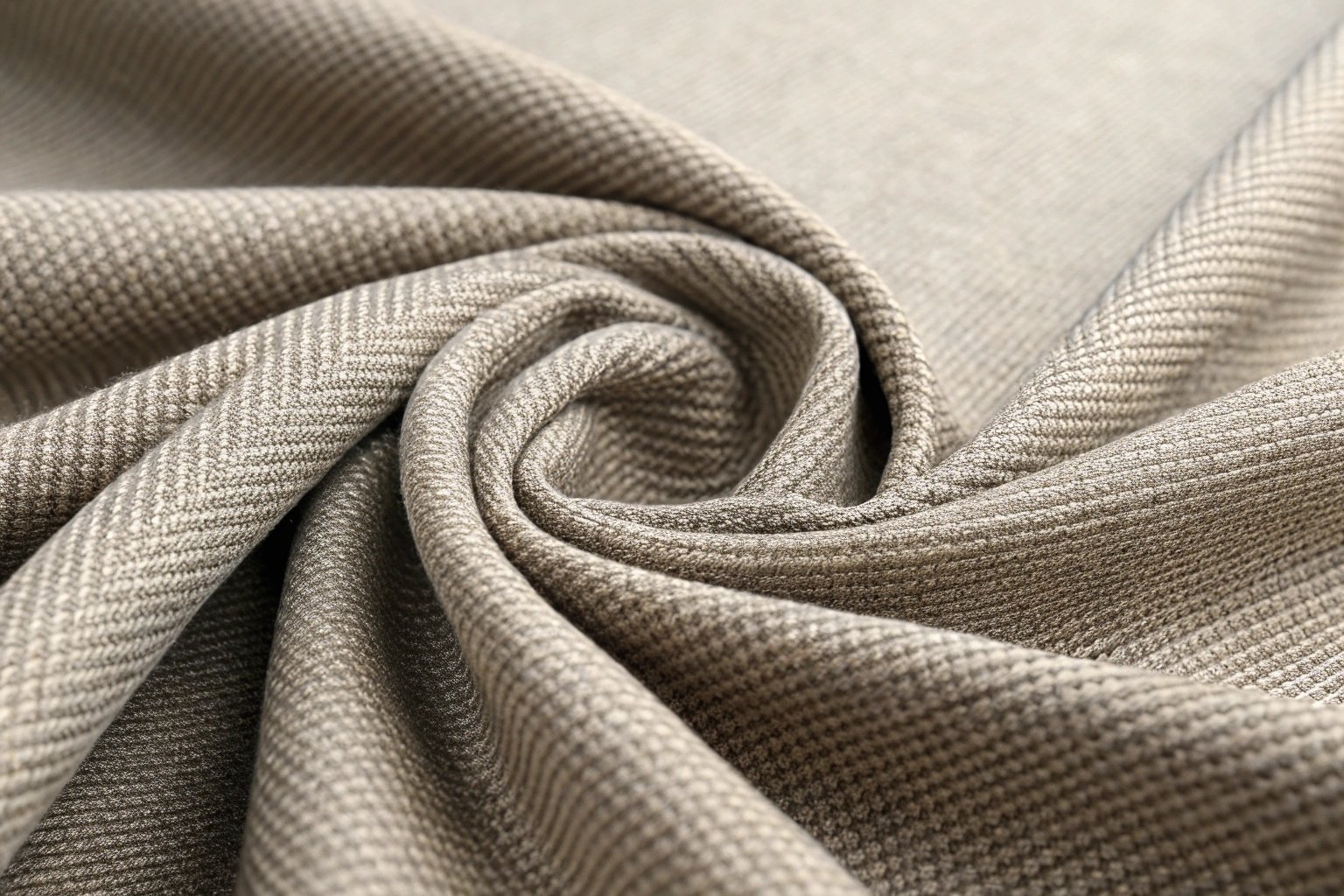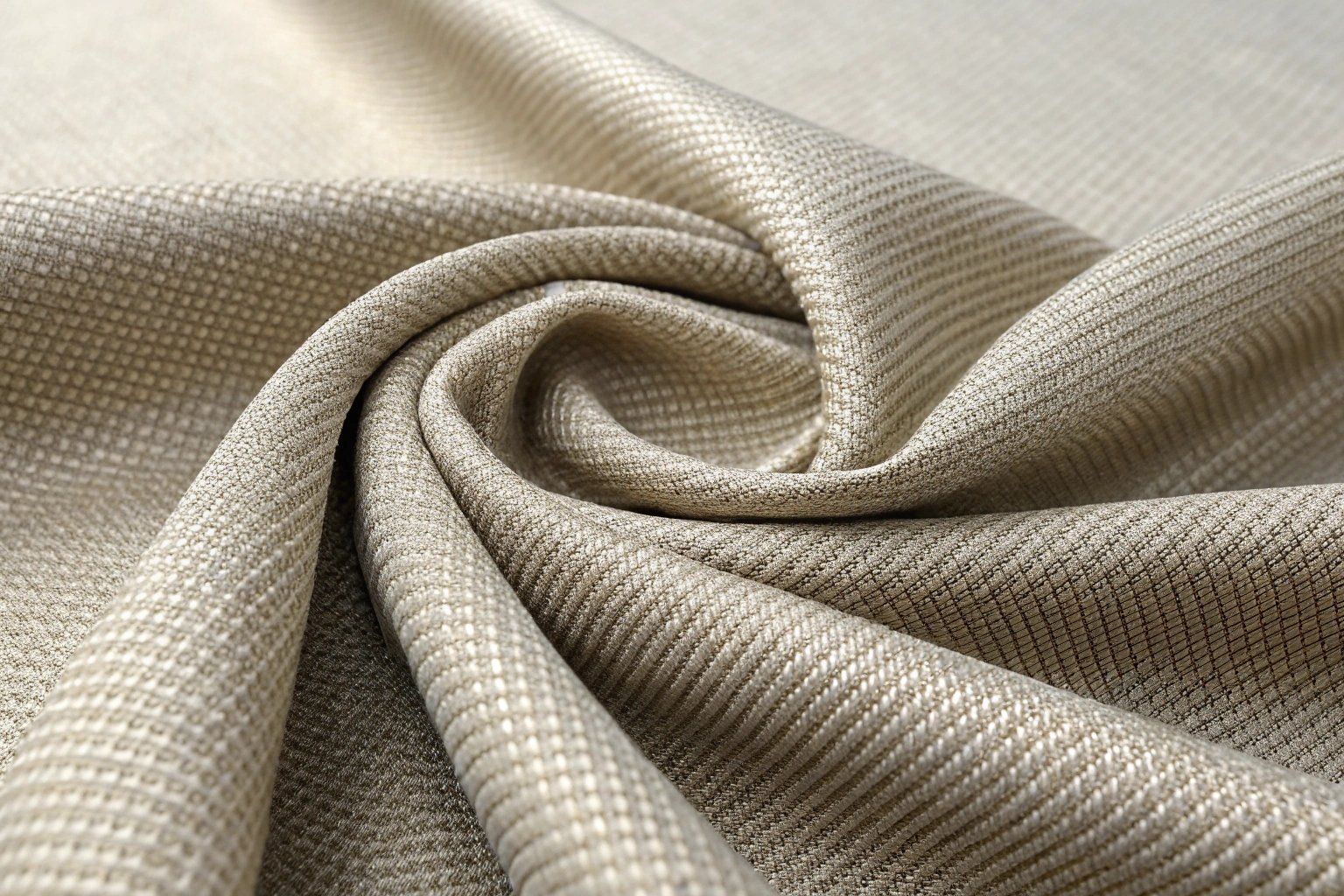Plain weave fabric is one of the oldest and most commonly used fabric structures, known for its versatility, durability, and affordability. This fabric offers both strength and aesthetic appeal, making it a popular choice for various applications, from casual wear to industrial uses. But what makes plain weave fabric so special? What should you know about its properties, advantages, and disadvantages? Read on to find out everything you need to know about plain weave fabric.

What are the features of plain weave fabric?
Plain weave fabric is simple in structure but highly functional. Here are the defining features that make plain weave so popular:

Simple and Strong Weaving Pattern
Plain weave is made by alternating the weft (horizontal threads) over and under the warp (vertical threads). This simple interlacing pattern creates a tight, stable fabric with good resistance to fraying or unraveling.
Why It’s Important for Brands: This stability makes plain weave fabric an ideal choice for products that need to maintain their shape after multiple washes, such as uniforms, workwear, and home textiles like curtains and tablecloths.
Durability and Wear Resistance
Thanks to its tightly interwoven structure, plain weave fabric is resistant to wear and tear. It’s commonly used in high-traffic areas like industrial workwear and uniforms, where durability is key.
Why It’s Important for Customers: For clients in need of long-lasting products, plain weave fabric offers a solution that can withstand everyday use and multiple washing cycles, making it a cost-effective choice for high-durability items.
Affordable and Cost-Effective
Plain weave fabric is relatively inexpensive to produce, making it a budget-friendly option for brands. Its simple construction means that production costs are lower compared to more complex weave patterns.
Why It’s Important for Brands: This affordability is especially useful for manufacturers looking to produce high-volume items like promotional products or budget-conscious apparel.
Great for Dyeing and Printing
The uniform surface of plain weave fabric allows for even dyeing and printing. This makes it an excellent option for fashion items that require clean, vibrant color or detailed prints.
Why It’s Important for Brands: Plain weave’s compatibility with dyes and prints gives brands an easy way to add color and patterns to their products, enhancing their visual appeal without increasing production costs.
What are the disadvantages of plain weave fabric?
While plain weave fabric offers many advantages, it does have a few downsides that brands and consumers should keep in mind:
Prone to Wrinkling
One of the main drawbacks of plain weave fabric is that it tends to wrinkle easily. Due to the flat nature of the weave, it lacks the resilience and structure that some other fabric types (like twill or satin) provide.
Why It’s a Drawback for Customers: This can be frustrating for consumers who require wrinkle-free garments, such as professional wear or garments for travel. Regular ironing or steaming is necessary to maintain a polished look.
Not Ideal for Stretch
Plain weave fabrics do not have the inherent stretch of knit fabrics or more complex weaves like jersey. While they are strong and stable, they do not offer flexibility.
Why It’s a Drawback for Customers: Customers seeking comfort and flexibility in activewear or form-fitting garments may find plain weave too rigid, as it doesn’t offer the stretch and drape that other fabrics provide.
Limited Luxurious Look
Though plain weave is practical and durable, it doesn’t have the luxurious shine or drape of fabrics like satin or silk. It generally has a matte finish, which may not appeal to customers seeking high-end or formal wear.
Why It’s a Drawback for Brands: Brands looking to create high-fashion garments may need to look elsewhere, as plain weave lacks the premium aesthetic that some luxury fabrics offer.
What are the properties of plain woven fabric?
Plain woven fabric is a widely used textile due to its unique blend of properties. Here’s a closer look at the key characteristics of this fabric:
Strength and Stability
The interlaced pattern of plain weave creates a fabric that’s strong and stable. This makes it ideal for products that need to maintain their shape over time, such as work uniforms, curtains, and tablecloths.
Why It’s Great for Clients: The stability of plain weave ensures long-lasting performance, making it perfect for both fashion and functional textiles.
Breathability
While it’s not as breathable as some open-weave fabrics, plain weave still allows air to circulate through the fabric, especially when made from natural fibers like cotton.
Why It’s Important for Customers: For clients needing comfortable, everyday wear, plain weave offers a balance of breathability and durability, making it suitable for a wide range of clothing, including shirts and blouses.
Versatility Across Industries
Plain weave fabric can be made from a variety of fibers, including cotton, polyester, and even silk. This versatility allows it to be used across different industries, from fashion to home goods and industrial products.
Why It’s Important for Brands: The wide availability of materials means plain weave can be adapted for a variety of applications, allowing brands to cater to diverse markets while maintaining affordability.
Easy to Care For
Plain weave fabrics are generally low-maintenance, especially when made from synthetic fibers like polyester. They’re easy to wash, and most versions hold up well in the laundry, which makes them ideal for everyday garments.
Why It’s Important for Customers: For customers who value practicality, plain weave fabrics offer a low-maintenance solution that fits well into busy, everyday life.
What are the names of plain weave fabrics?
Plain weave fabric goes by several names depending on the fiber used and the finish applied. Some of the most common types include:
Muslin
Muslin is a soft, plain weave fabric typically made from cotton. It’s known for its lightness and is often used for garments, household items, and quilting.
Why It’s Popular: Its soft texture and affordability make it ideal for both functional and fashion purposes.
Calico
Calico is another plain weave cotton fabric. It’s often used for casual clothing and home textiles, such as curtains and bedding.
Why It’s Popular: Affordable and durable, calico is a go-to fabric for both functional and decorative items.
Taffeta
Taffeta is a smooth, crisp fabric often made from silk or polyester. It uses plain weave but is known for its structured, elegant appearance.
Why It’s Popular: Taffeta is used in formal and evening wear because of its ability to hold its shape and create a polished, sophisticated look.
Chambray
Chambray is a lightweight fabric often confused with denim. It’s a plain weave, typically made from cotton, with a soft texture and is perfect for shirts and dresses.
Why It’s Popular: Chambray offers a softer, breathable alternative to denim, making it perfect for casual clothing.
Conclusion
Plain weave fabric is a simple yet versatile textile with a range of applications, from everyday fashion to industrial use. Its durability, stability, and ease of production make it a reliable choice for both budget-conscious and high-demand markets. Whether you’re designing casual wear, functional garments, or home textiles, plain weave offers a reliable foundation.
However, while it may not have the luxurious sheen or stretch of other fabrics, its affordability and ease of care make it a go-to option for a wide variety of projects. For brands looking to create durable, cost-effective products that stand the test of time, plain weave fabric is an excellent choice.

